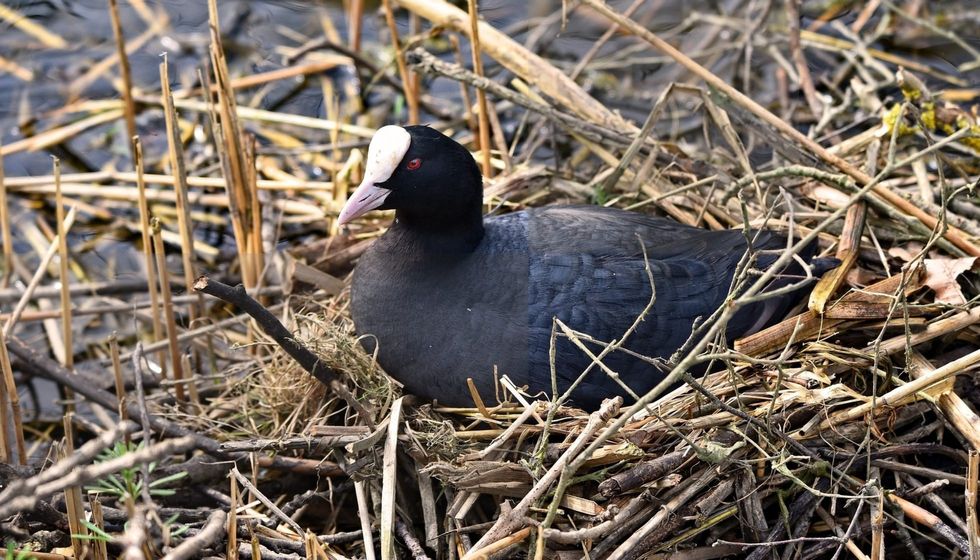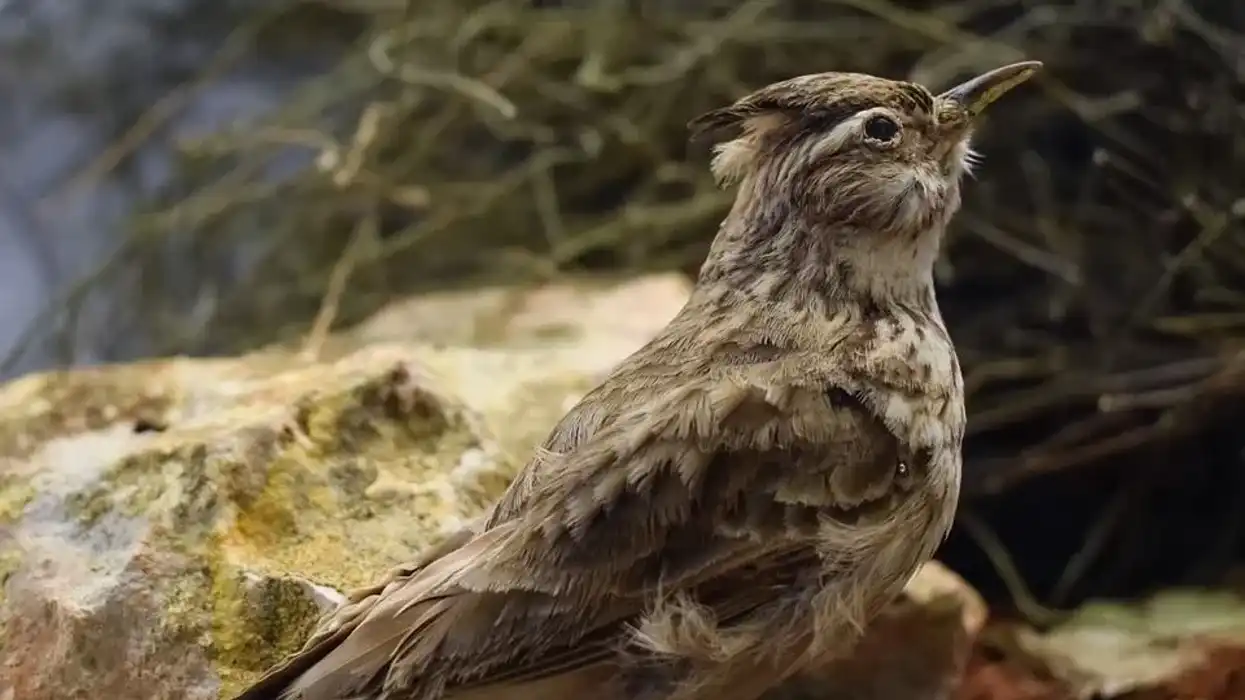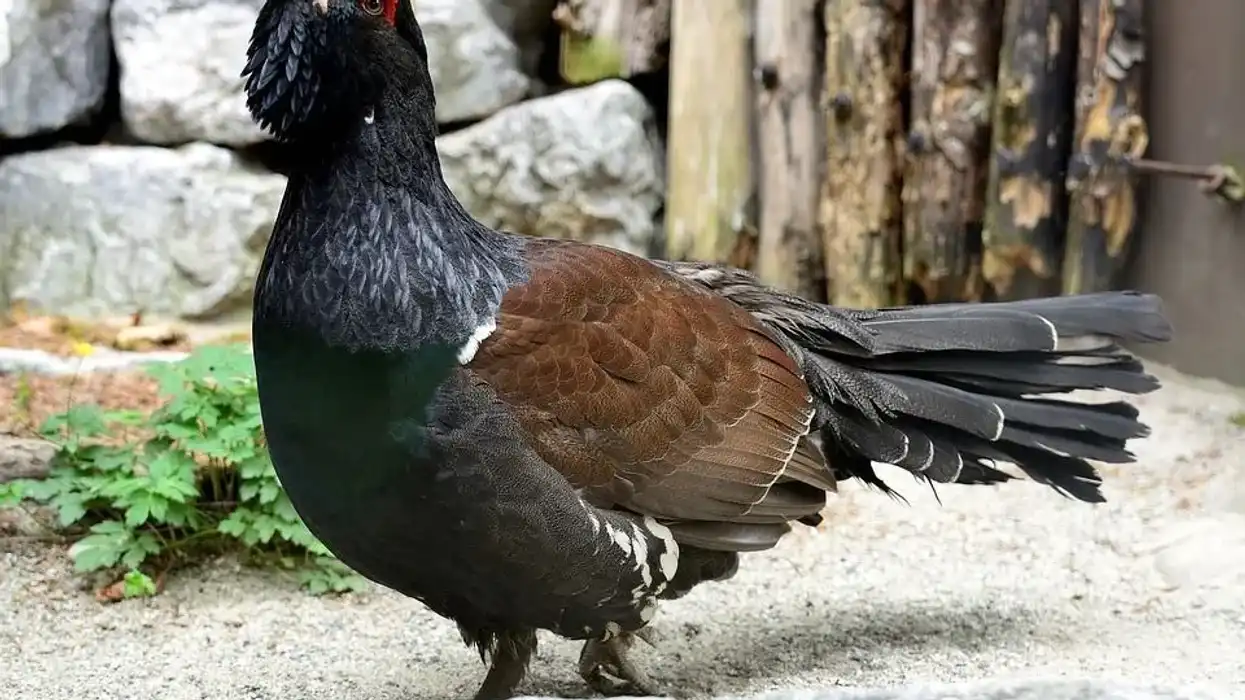The Eurasian coot (Fulica atra) is a beautiful water bird species native to several regions across Asia, Europe, New Zealand, Australia, and North Africa.
Notable for its sooty black plumage and a lustrous white frontal shield and bill, this bird species commonly inhabit fresh and brackish marshes, small ponds, reservoirs, pools, gravel pits, barrages, canals, oxbow lakes, lagoons, lakes, and slow-moving waters.
These water birds usually forage among floating mats of waterweed or submerged aquatic plants and can often be seen swimming in large flocks or running across the surface of the water.
The Eurasian coot is also known by other names such as the Australian coot and the common coot. Even though the bird resembles a duck, it is not one.
In fact, the bird is a member of the Rallidae family which also includes two other bird species, crakes and gallinules. Coots can often be found out in open water.
When in the water, these birds do a little jump, make short dives, and bob their heads while swimming. Moreover, these coots are migratory birds and can turn quite aggressive and territorial, particularly during their breeding season.
Continue reading for more interesting facts about these coots from Eurasia interesting. If you like reading about different species of birds, do check out our articles on the pelican and swallow-tailed kite.
Eurasian Coot Interesting Facts
What type of animal is a Eurasian coot?
Fulica atra (Eurasian coot) is a medium-sized species of waterbird and a member of the family Rallidae.
What class of animal does a Eurasian coot belong to?
Eurasian coots belong to the class Aves which includes all birds.
How many Eurasian coots are there in the world?
According to a 2019 assessment by the International Union for Conservation of Nature (IUCN) Red List of Threatened Species, there are between 5,300,000-6,500,000 mature individuals of the Eurasian coot (Fulica atra) left in the wild.
Where does a Eurasian coot live?
The Eurasian coot or the Australian coot is a species of waterbird that can mostly be seen living in large, slow-moving, or still waters. The birds inhabit freshwater lakes and ponds, pools, reservoirs, gravel pits, barrages, canals, rivers, dykes, creeks, open marshes, oxbow lakes, lagoons, and flood lands.
What is a Eurasian coot's habitat?
The general geographical distribution of the Eurasian coot includes regions of Asia, Europe, Australia, North Africa, and New Zealand. Since they are a migratory species, the birds travel across much of Asia to move further west and south to escape the harsh winter.
In their native habitats, coots prefer shallow waters that offer enough room for diving and have a muddy bottom abundant in submerged or floating vegetation.
Winters will find the birds in inshore or estuarine sea waters. They may also be found in fast-moving rivers, provided they are thriving with vegetation.
Who do Eurasian coots live with?
The Eurasian coot can be seen forming large flocks, especially during the non-breeding season. This group formation by the birds appears to be a protective mechanism against predators. Coots become particularly aggressive and territorial during the breeding season towards their own kind as well as birds of other species. A group of coots is called a cover or covert.
How long does a Eurasian coot live?
The lifespan of the Eurasian coot can go up to 15 years.
How do they reproduce?
Adult male and female birds of breeding pairs usually nest in shallow water. The nest is mostly concealed with vegetation but may sometimes be in the open. The nests are bulky and made up of stems, leaves, roots, barks, and twigs. Floating nests are less common.
An adult female coot lays a clutch consisting of six to 10 buff-colored eggs with dark brown or black spots. The number of broods may go up to two per season.
The incubation period lasts for 21-26 days. Both the adult male and female parents participate in feeding and caring for the young, even the older young may help the parents feed chicks of newer broods.
The young coots are born with black downy feathers. The juvenile birds take about three to five weeks before they can dive and can feed independently by about 30 days.
The young fledge when they are 55-60 days old and become fully independent by six to eight weeks. However, juvenile birds remain in their parental territory for as many as 14 weeks to help in defense.
What is their conservation status?
According to the International Union for Conservation of Nature (IUCN) Red List of Threatened Species, the Eurasian coot is a species of Least Concern.
Eurasian Coot Fun Facts
What do Eurasian coots look like?
The adult bird has a dark, glossy black head and a lighter, slaty black plumage with a snowy white bill. The white color of the bill extends upwards to form a white facial shield on the forehead and between the eyes.
This white shield and bill against the black body feathers give the coot a distinctive look. The eyes of the bird are bright red.
The legs are gray, yellow, and white, with large feet and pale gray tones. The toes are large and have bulb-like swellings. The adult male and female birds look more or less similar with slight differences in size.
In contrast, the juvenile birds are not black but wear a paler, brownish-gray plumage with a grayish-white throat and underparts. The juveniles lack the facial shield as well.
How cute are they?
No doubt, the small black-colored head and contrasting white bill make coots look not just cute but also quite beautiful.
How do they communicate?
Coots rely on their vocals for communication. The contact call is typically a single and short 'kowk', 'kow', 'kup', or a sharp 'kick'.
While the male's combat call is sharp and explosive, the female gives out a short, croaking sound. Males and females have distinct alarm calls as well. Eurasian coots can be quite noisy, with their calls becoming sharp and explosive when agitated.
How big is a Eurasian coot?
The Eurasian coot can range in length between 14-15 in (35.5-38.1 cm) with a wingspan in the range of 28-31 in (70-80 cm). They are almost the same size as the American coot (Fulica americana).
How fast can an Eurasian coot fly?
Eurasian coots are quite reluctant to fly and when taking off, the birds run across the water surface. They may run a short distance on land to escape from attackers, but even then, the birds do not really fly.
How much does a Eurasian coot weigh?
Male coots weigh about 31.3 oz (890 g), and the females are slightly smaller, weighing about 26.4 oz (750 g).
What are the male and female names of the species?
Male and female coots do not have any distinct names.
What would you call a baby Eurasian coot?
Like all other birds, a baby Eurasian coot is called a chick.
What do they eat?
The Eurasian coot is an omnivore that feeds on both plant and animal-based food. Its food primarily includes both terrestrial and aquatic vegetation, seeds, as well as algae and grasses. The birds may also prey on adult and larval insects, shrimps, mollusks, leeches, worms, fish, spiders, fish eggs, frogs, small mammals, and bird eggs.
Are they poisonous?
Coots are not known to be poisonous.
Would they make a good pet?
Since coots are wild birds that dwell in specific aquatic habitats, they are not suited for keeping as pets.
Did you know...
The Eurasian coot (Fulica atra) has four recognized subspecies with diverse geographical distribution. The subspecies are Fulica atra atra (Europe, North Africa, India, Japan, Borneo, Philippines), Fulica atra lugubris (northwest New Guinea, Bali, java), Fulica atra novaeguineae (central New Guinea), and Fulica atra australis (Australia and New Zealand).
The major part of a baby coot's diet consists of mollusks and aquatic insects.
When prepared well, coots' meat is quite tasty to eat.
What is the difference between a Eurasian coot and a diving duck?
The Eurasian coot may resemble a diving duck, but the two are quite different. While coots have a short and pointy beak like that of chickens, the beak of ducks is broad and flat.
Ducks have webbed feet, and the feet of coots have large lobes with the toes folding back with each step to aid walking on dry land.
While both birds dive to forage for food, coots bob back up to the surface to eat their catch, but ducks can feed underwater. Moreover, ducks belong to the family Anatidae, a group distantly related to the coots.
Are Eurasian coots endangered?
No, the Eurasian coot is not endangered and is categorized as Least Concern in the IUCN Red List of Threatened Species. However, the Agreement on the Conservation of African-Eurasian Migratory Waterbirds (AEWA) applies to the Eurasian coot species.
Here at Kidadl, we have carefully created lots of interesting family-friendly animal facts for everyone to discover! For more relatable content, check out these Brant facts and Arctic Tern facts for kids.
You can even occupy yourself at home by coloring in one of our free printable Eurasian coot coloring pages.









